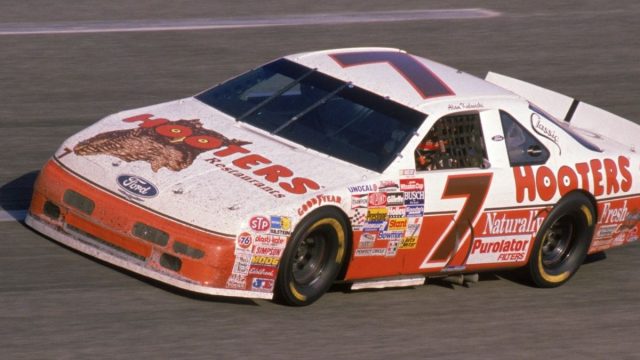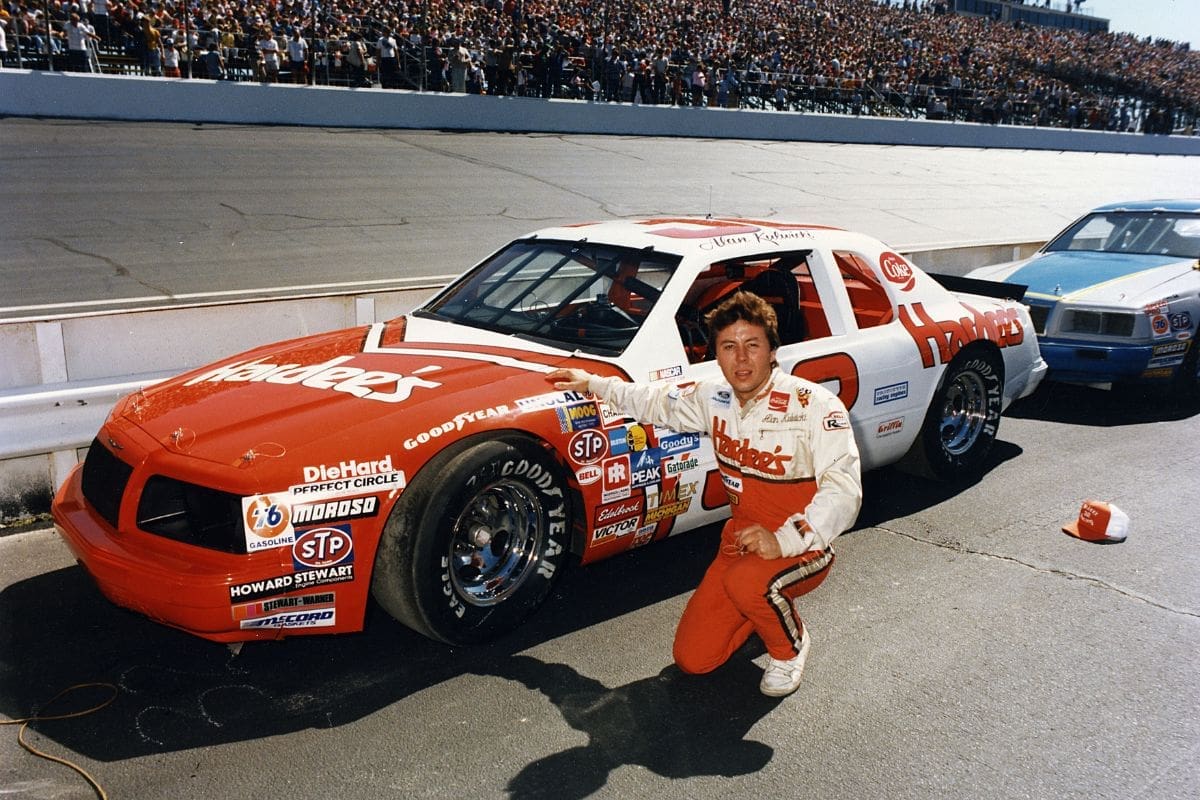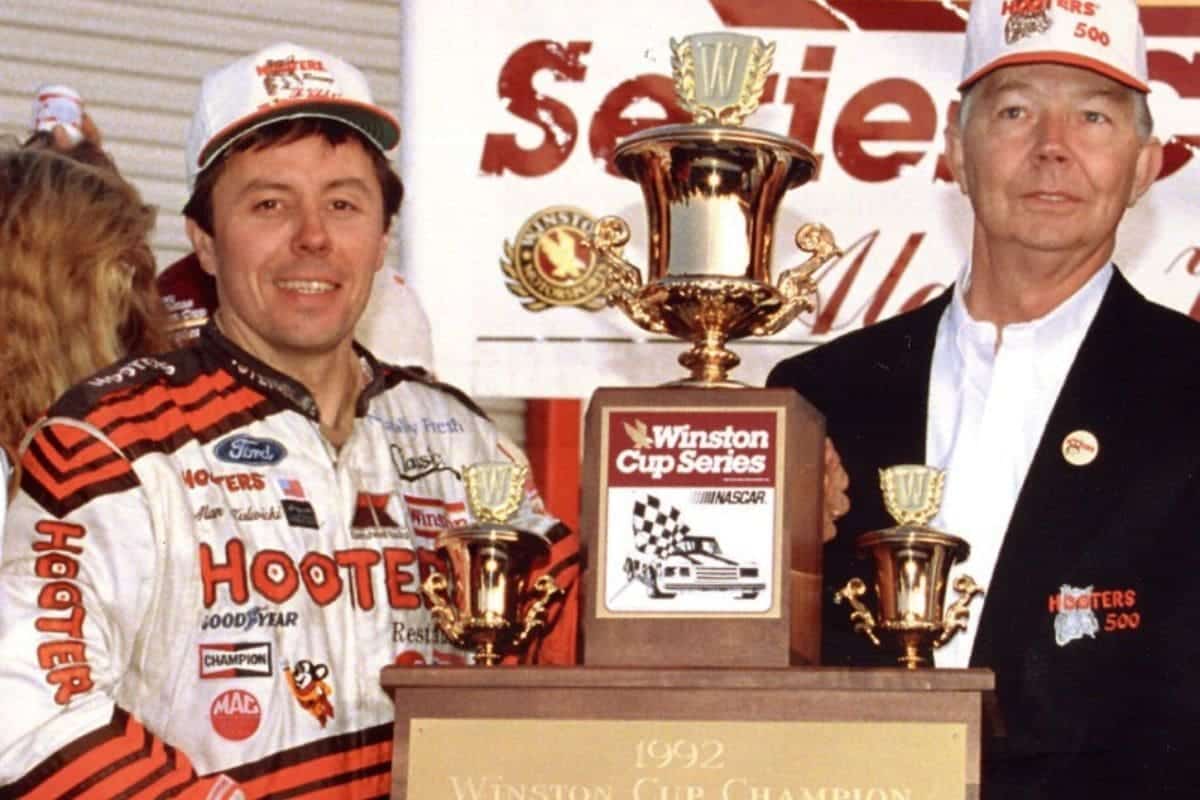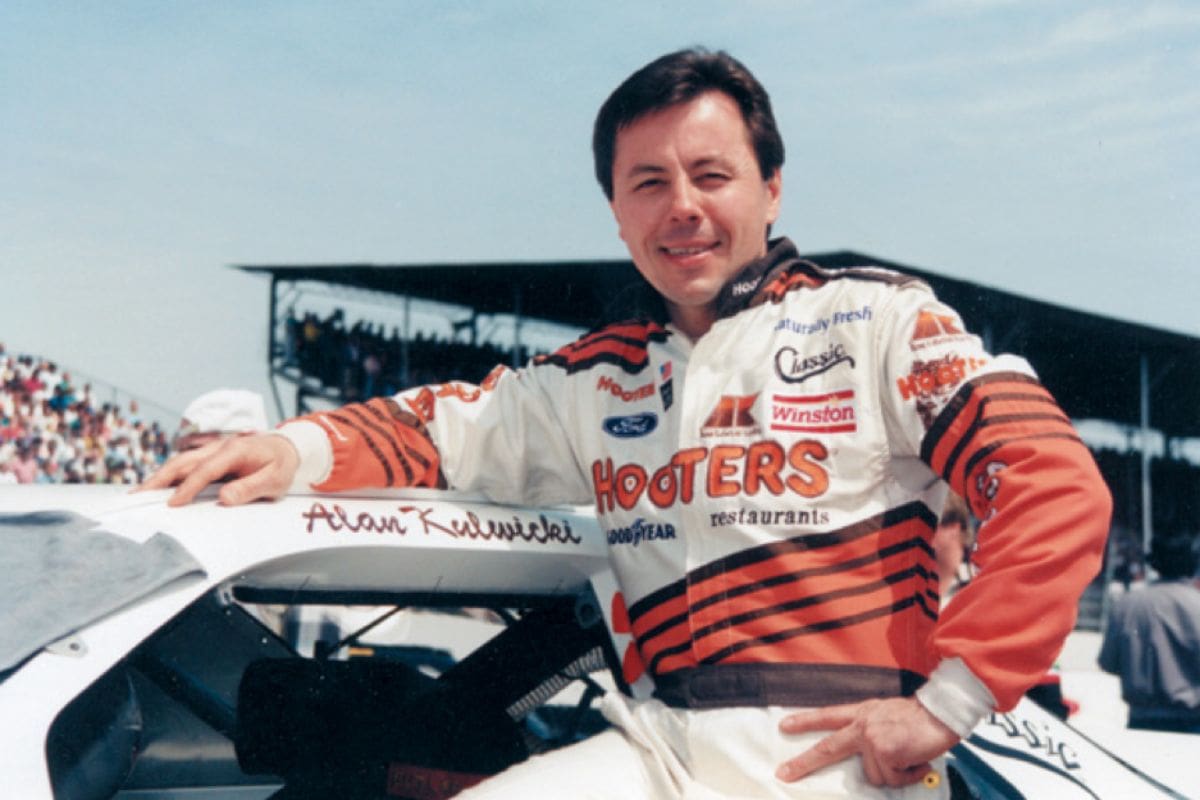Alan Kulwicki and the Road to 1992 Championship: Alan Kulwicki’s rise to the 1992 NASCAR Championship represents an extraordinary narrative of resilience and strategic mastery within the racing. Overcoming the limitations of a modestly funded team, Kulwicki’s expedition is a study in unconventional leadership and engineering. His approach defied the norms of the sport, setting new standards for driver involvement and team dynamics. The peak of his efforts at the Atlanta Motor Speedway, where he secured the title by a mere 10 points, offers profound insights into the essence of competitive determination and innovation.
Key Highlights
- Kulwicki Racing was an underdog team with limited resources that won the 1992 NASCAR Winston Cup Championship.
- Alan Kulwicki’s hands-on management and engineering expertise were crucial to the team’s success.
- The team’s resourcefulness and inventive problem-solving provided a competitive edge.
- Kulwicki’s strategy to secure bonus points for leading the most laps was crucial in winning the championship.
- The 1992 victory exemplified perseverance and tactical brilliance against well-funded competitors.
Underdog Beginnings and Team Dynamics
Against the backdrop of NASCAR’s 1992 season, Alan Kulwicki Racing emerged as a perfect underdog, with a team whose steadfast dedication and passion for racing defied their limited resources and modest beginnings. In an era dominated by well-funded, factory-backed teams, Alan Kulwicki’s operation stood out for its distinctive approach and unyielding resolve. The team was a motley crew, often viewed as a band of misfits, yet united by an unrelenting love for the sport.
The historical context of the early 1990s in NASCAR was one of increasing commercialization and technological advancement. The major teams had access to cutting-edge technology, extensive sponsorship, and a variety of skilled personnel. Alan Kulwicki, however, charted a different course. With minimal financial backing and sparse sponsorship, his team relied heavily on sheer perseverance and an unwavering work ethic. Despite frequently being out-qualified and out-raced by their wealthier competitors, Kulwicki’s team could never be outworked.
Their path to the 1992 championship was a validation of the power of determination and cohesion. Every member of Alan Kulwicki Racing shared a singular focus—racing excellence. This collective spirit of persistence and commitment enabled them to overcome the inherent disadvantages posed by their limited resources. They optimized every facet of their operation, ensuring that no effort was spared and no detail overlooked.
Unconventional Team Management and Approach
Building on the foundation of their underdog spirit and team cohesion, Alan Kulwicki’s unconventional management style and creative approach played a pivotal role in steering his team to the 1992 championship victory. Kulwicki, renowned for his meticulous attention to detail, diverged from the traditional norms governing NASCAR teams. Instead of relying on a hierarchical structure, he appointed racers to every position within his team, thereby ensuring that each member had an intrinsic understanding of the racing experience and its unique demands.
Kulwicki’s strategy was not merely about assigning roles but about maximizing the potential of limited resources. In an era where large, well-funded teams dominated the NASCAR landscape, AK Racing’s lean operation necessitated resourceful thinking and frugality. Kulwicki’s hands-on approach, where he involved himself deeply in the mechanical and strategic aspects of racing, exemplified his commitment to efficiency and excellence.
Moreover, Kulwicki’s firm belief in doing things his way fostered a culture of resilience and adaptability within the team. His inventive mindset led to novel problem-solving techniques that often caught competitors off guard. For instance, his approach to race strategy, particularly in managing pit stops and fuel consumption, showed an acute understanding of the sport’s intricacies, often translating into competitive advantages on the track.
Alan Kulwicki’s Leadership and Innovations
Alan Kulwicki’s leadership, marked by his hands-on involvement and engineering expertise, catalyzed numerous innovations that reshaped NASCAR team dynamics and race car setups. Kulwicki, a college graduate with an engineering degree, utilized his technical knowledge to gain a competitive edge in the sport. His approach to car setups allowed AK Racing to optimize practice sessions, providing invaluable data and insights that translated into better race performance.
In a conversation with Dale Earnhardt Jr. on his podcast, The Dale Jr. Download, Paul Andrews, Alan Kulwicki’s crew chief, revealed that the secret behind their championship victory was Kulwicki’s way of handling things.
“Everything went through Alan you know. He ran the team as far as a financial standpoint, he didn’t have a bookkeeper, he had a secretary and I mean, you look at checks, I still get somebody to send me a picture of a check of his name signed on. He signed the checks whenever I buy something you know, if I had to, if it was something big, we obviously talked about it.” – Andrews
One notable aspect of Kulwicki’s leadership was his direct control over financial and operational aspects of the team. As Paul Andrews, his crew chief, recounted, Kulwicki leave a traditional bookkeeper, opting instead to personally sign off on expenditures. This level of involvement ensured that every financial decision was aligned with his strategic vision, fostering a cohesive and unified team ethos. Such hands-on management is rare in contemporary NASCAR, where team owners typically delegate these responsibilities to specialized staff.
Moreover, Kulwicki’s knack for innovation extended to the mechanical side of racing. He was actively involved in setting up his cars, often personally overseeing adjustments and modifications. This direct engagement optimized the cars’ performance and inspired his team to adopt a detail-oriented mindset. Kulwicki’s practical engineering expertise enabled AK Racing to operate efficiently on a small budget, a reflection of his resourcefulness and ingenuity.
“He ran it all you know, he likes setting up his own cars too you know. He set up most of his cars. He was right there doing the whole time, that’s just what you did back then you know. And again, small budget.” – Andrews
In an era where larger teams with greater resources dominated, Kulwicki’s ability to utilize his technical skills and leadership prowess set him apart. His inventive approach and dedication to hands-on management created a blueprint for success that defied conventional NASCAR wisdom, ultimately reshaping the landscape of the sport.
The Championship Victory
In the peak of his steadfast pursuit of excellence, Alan Kulwicki’s creative leadership and hands-on management propelled him to clinch the 1992 NASCAR Winston Cup Championship, marking a historic achievement for both him and AK Racing. Kulwicki’s victory was not merely a confirmation of his driving skills but also of his inventive approach and relentless dedication to mastering every aspect of his team’s operations.
The 1992 season was a proof of Kulwicki’s meticulous attention to detail and his ability to extract maximum performance from limited resources. As both driver and owner, his dual role afforded him an intimate understanding of the delicate balance between vehicle setup, race strategy, and team dynamics. This comprehensive grasp proved crucial during the season’s final race at Atlanta Motor Speedway, where Kulwicki demonstrated his strategic expertise by securing the championship in a nail-biting showdown.
A key moment in this climactic race was Kulwicki’s decision to lead just enough laps to make sure he accumulated the necessary points to capture the title. This strategy reflected his sharp focus and in-depth knowledge of NASCAR’s point system, which ultimately allowed him to edge out his competitors in one of the closest title races in NASCAR history. The championship victory was not just a personal achievement for Kulwicki; it was a validation of his unconventional methods and a celebration of the underdog spirit that he embodied.
Kulwicki’s victory in 1992 remains a defining moment in NASCAR history, illustrating how intelligence, innovation, and sheer determination can overcome immense challenges, cementing his legacy as one of the sport’s greats.
Winning Against All Odds
Against a backdrop of formidable competitors and limited resources, Alan Kulwicki’s 1992 championship victory exemplifies the extraordinary power of resilience and strategic brilliance in the NASCAR. His success, achieved with AK Racing’s modest means, stands as a pinnacle of underdog success in a sport often dominated by well-funded teams.
Kulwicki’s path to the 1992 championship was fraught with challenges. After a disastrous P34 finish at Dover International Speedway, he found himself 248 points behind the leader, Bill Elliott, with just six races remaining. Many would have deemed the situation insurmountable, but Kulwicki’s unyielding spirit and tactical skill told a different story. He methodically clawed his way back, finishing no lower than P12 in the subsequent races, narrowing the gap to just 30 points behind new leader Davey Allison by the season’s final race.
The climax unfolded at Atlanta Motor Speedway, a race charged with historical significance as it marked Richard Petty’s farewell and Jeff Gordon’s debut. Fate played a significant role when Allison, the favorite, crashed out. The championship then hinged on the duel between Elliott and Kulwicki. With strategic precision, AK Racing aimed for the five-point bonus for leading the most laps. Despite finishing P2 behind Elliott, Kulwicki’s strategy secured him the bonus, resulting in a narrow 10-point championship victory.
News in Brief: Alan Kulwicki and the Road to 1992 Championship
Alan Kulwicki’s path to the 1992 Championship Title exemplifies the victory of resourcefulness, perseverance, and strategic insight in motorsport history.
Overcoming significant resource limitations, Kulwicki’s inventive approaches and meticulous leadership transformed his underdog team into champions.
His unprecedented 10-point victory at Atlanta Motor Speedway not only highlighted his tactical brilliance but also redefined the possibilities within NASCAR.
Kulwicki’s legacy endures as a tribute to the power of persistence and the impact of visionary leadership in competitive racing.
Our Reader’s Queries
Q. Who won the 1992 NASCAR Cup series?
A. The championship showdown boiled down to a head-to-head duel between Bill Elliott and Alan Kulwicki. Elliott claimed victory in the race, with Kulwicki closely following in second place. Kulwicki’s impressive performance included leading 103 laps, edging out Elliott’s 102 laps led. He secured the crucial 5 bonus points for leading the most laps and ultimately captured the Winston Cup title.
Q. What happened to Alan Kulwicki?
A. On the evening of April 1, 1993, NASCAR champion Alan Kulwicki tragically lost his life in an aviation accident. The Swearingen Merlin III twin turboprop he was aboard crashed near Blountville, Tennessee, during its approach to the nearby Tri-Cities Regional Airport.
Q. When did Alan Kulwicki win the championship?
A. Alan Kulwicki clinched the 1992 Winston Cup Championship by the narrowest margin in NASCAR history at the time. Tragically, he passed away early in 1993 in a light aircraft accident, preventing him from defending his hard-earned title. Despite his untimely death, Kulwicki has been honored with inductions into multiple racing halls of fame and recognition as one of NASCAR’s 50 greatest drivers.
ALSO READ: Alan Kulwicki’s Tragic Crash: Crew Chief’s Heartfelt Memories



